Abstract
Survival of Treponema pallidum was found to be prolonged in the presence of tissue culture. Of the 12 cultures studied, cottontail rabbit epithelium (Sf1Ep) supported T. pallidum for the longest time. In horizontal Leighton tubes with reduced medium and an atmosphere of 5% CO2 in N2, the 50% survival time (ST50) was 5 to 6 days for treponemes associated with monolayers of Sf1Ep cells. Comparable cell-free tubes had ST50 values of less than 4 days. In vertical Leighton tubes containing 6 ml of prereduced medium incubated aerobically, gradients of O2 tension and redox potential were established. Attachment and survival of T. pallidum were greatest at a depth of about 10 to 20 mm. Motility was between 70 and 95% in this area throughout the first 14 days of incubation. Occasionally, greater than 50% motility was observed for as long as 21 days. The redox potential and O2 tension in the optimal area of gradient cultures were reproduced by adjusting the medium depth in a shell vial culture system containing cells on a horizontal cover slip. Treponemes associated with the cell monolayer in both gradient and shell vial cultures were still virulent after 21 days in vitro. The dilution of testis extract and the concentration of T. pallidum were found to be important factors in survival of T. pallidum.
Full text
PDF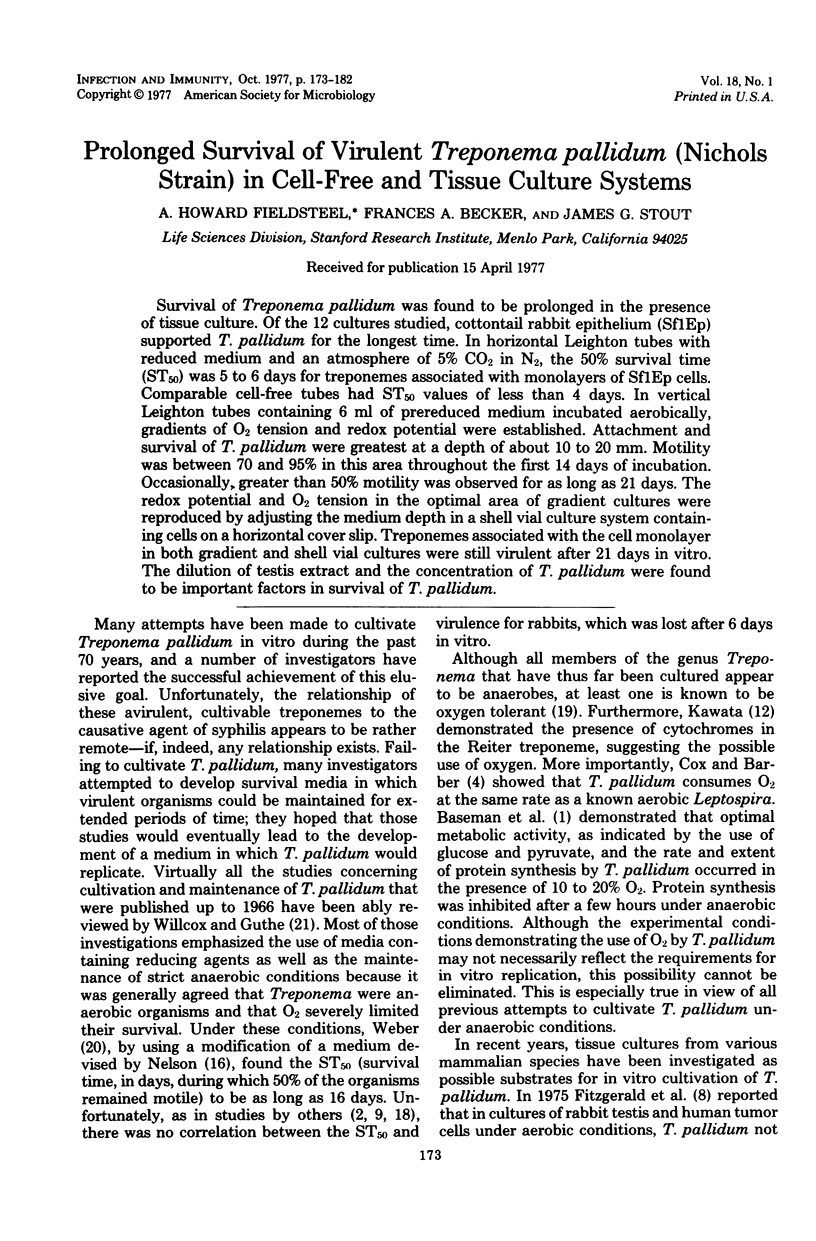
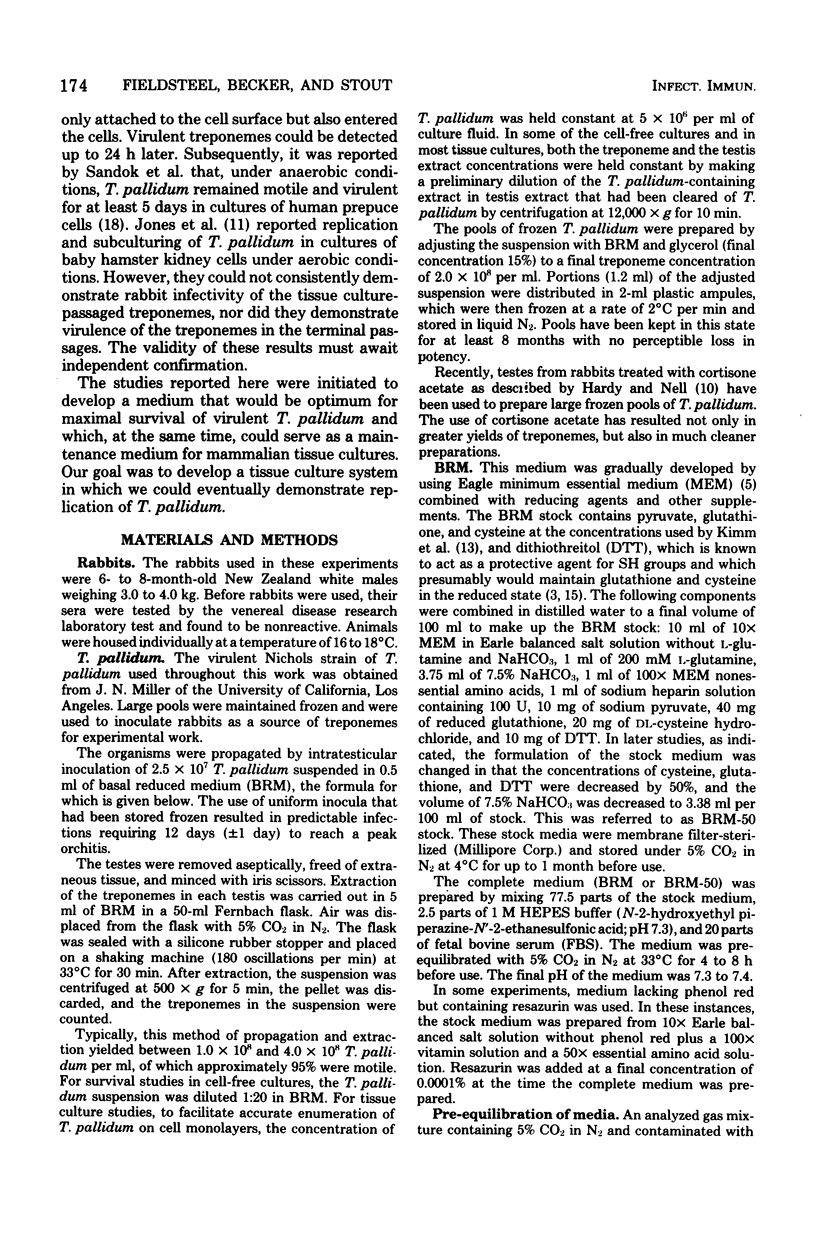
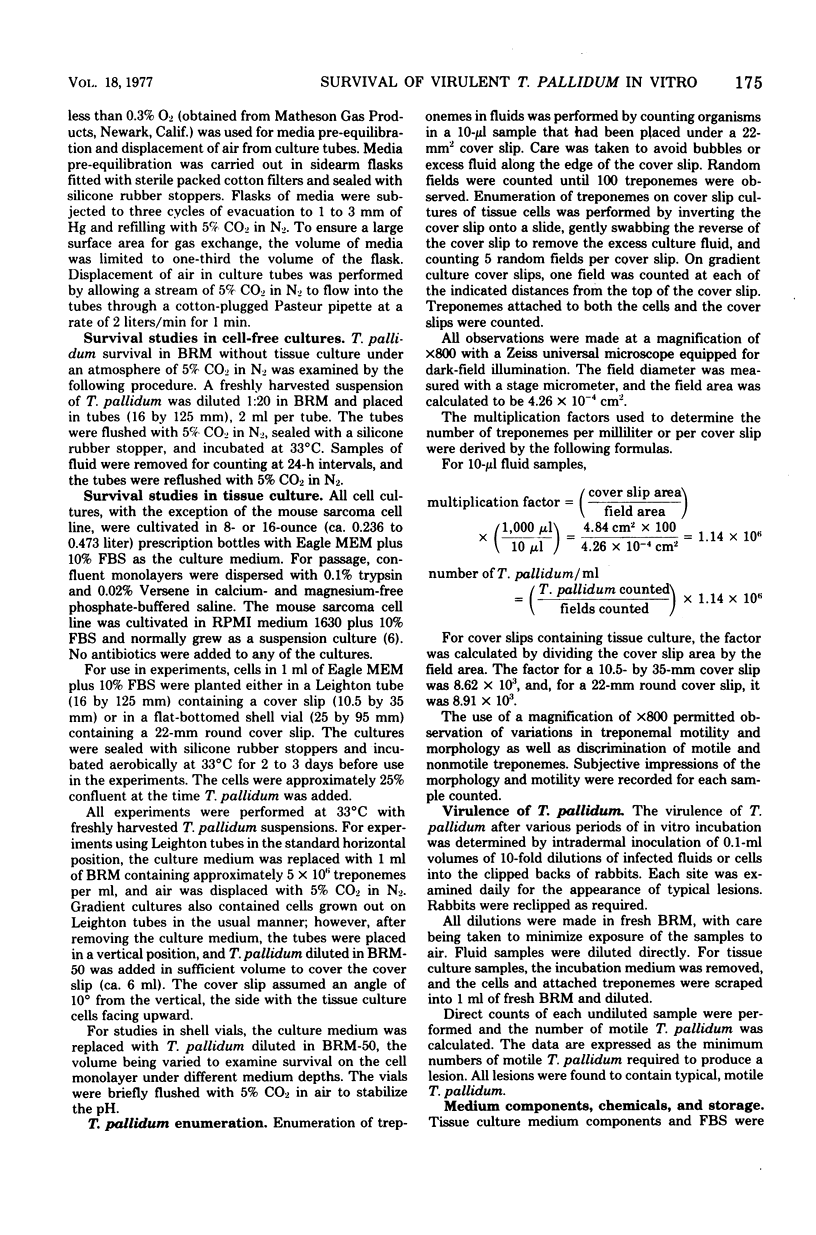
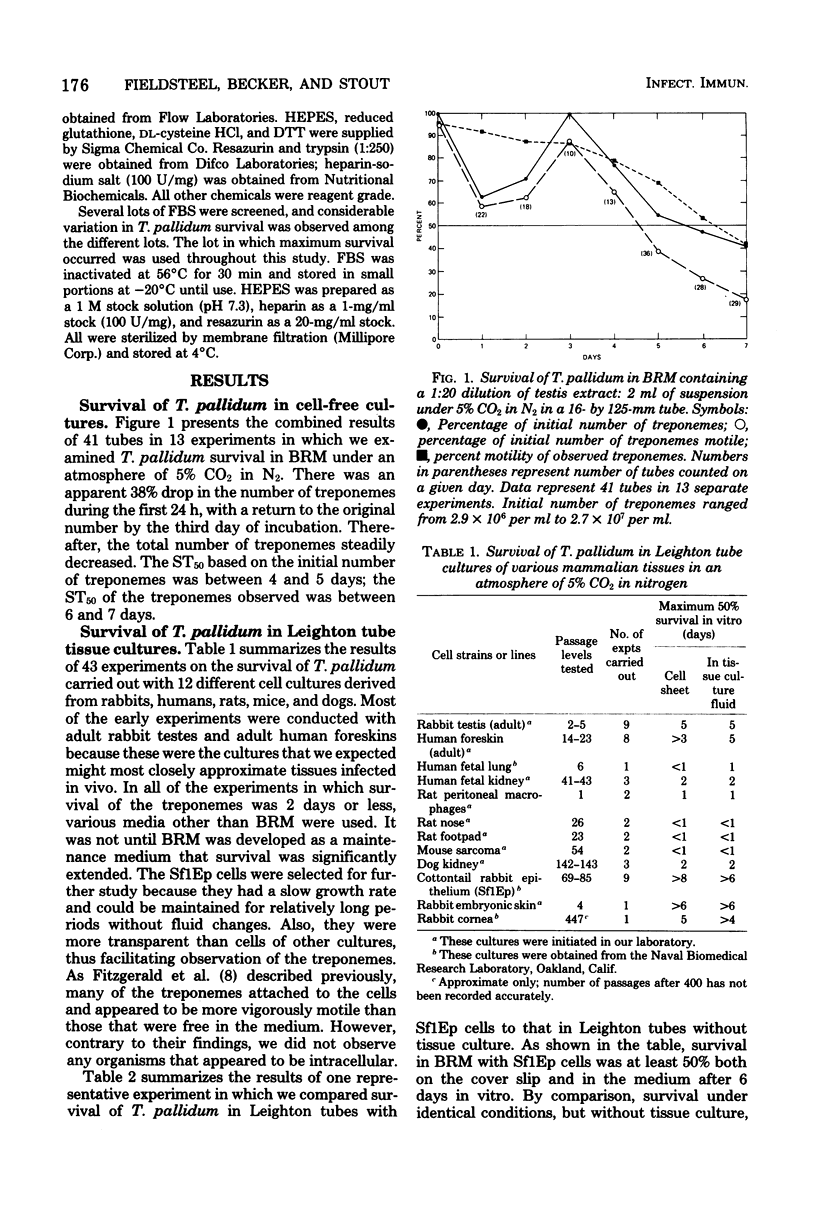
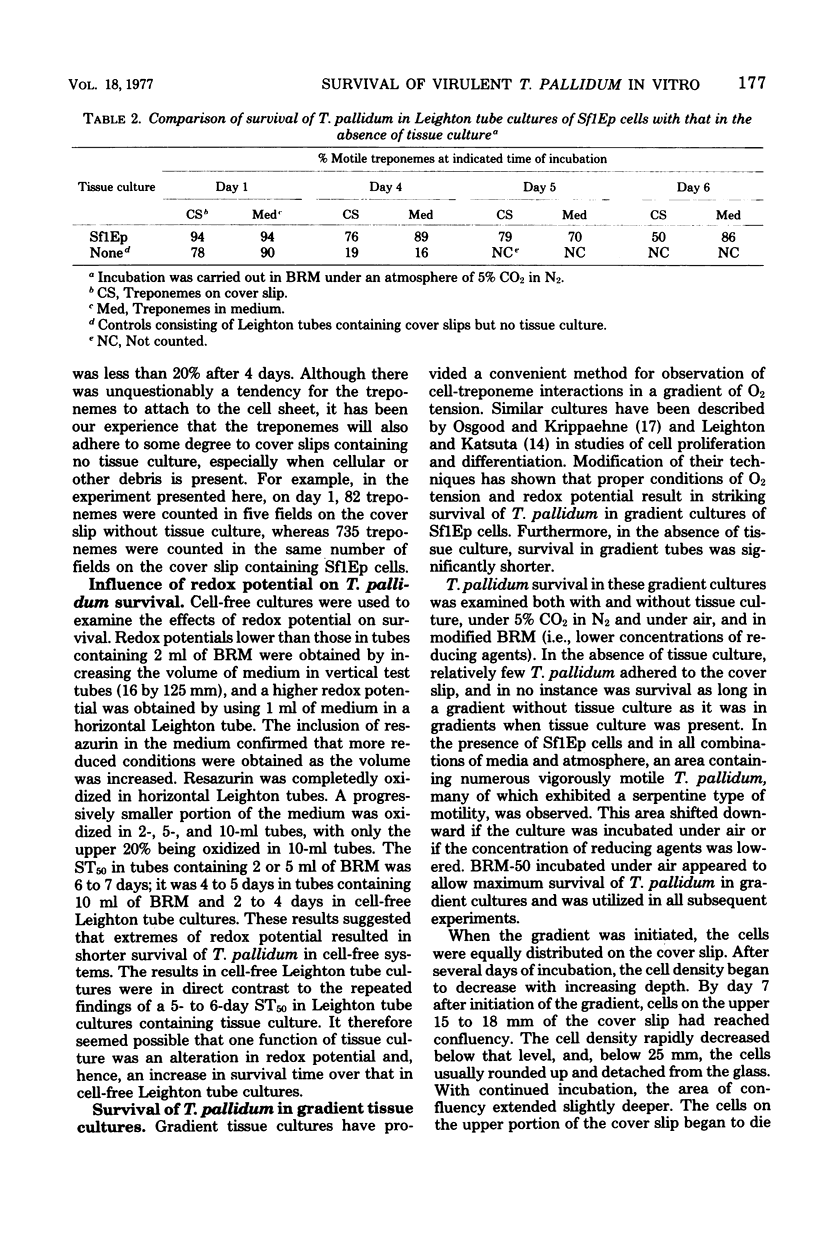
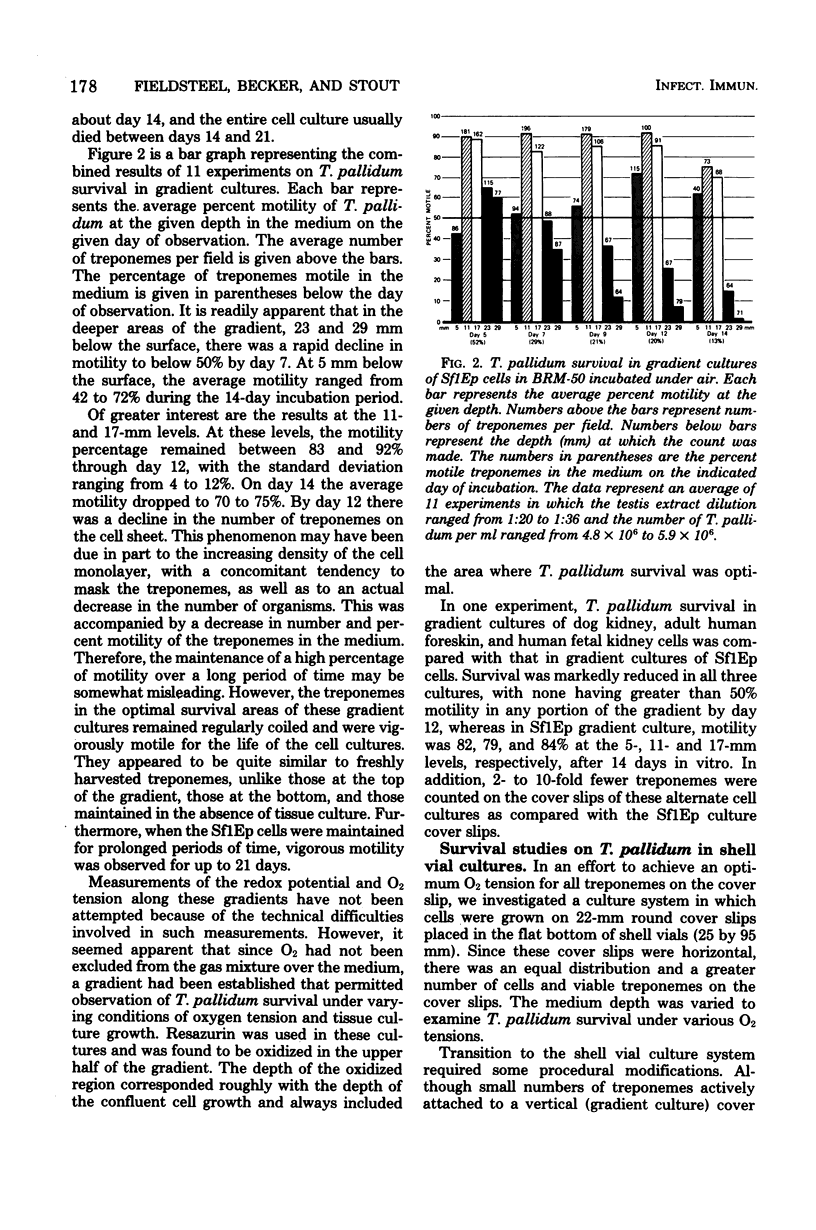
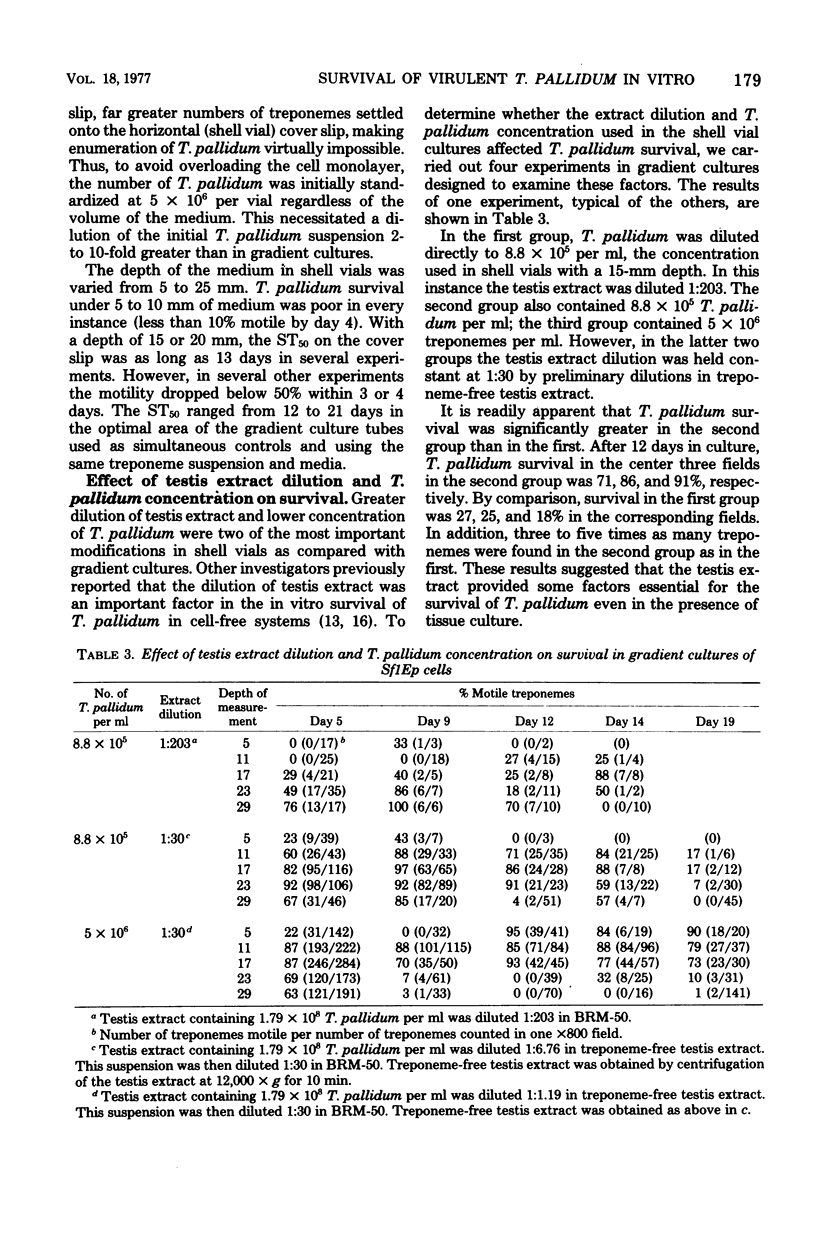
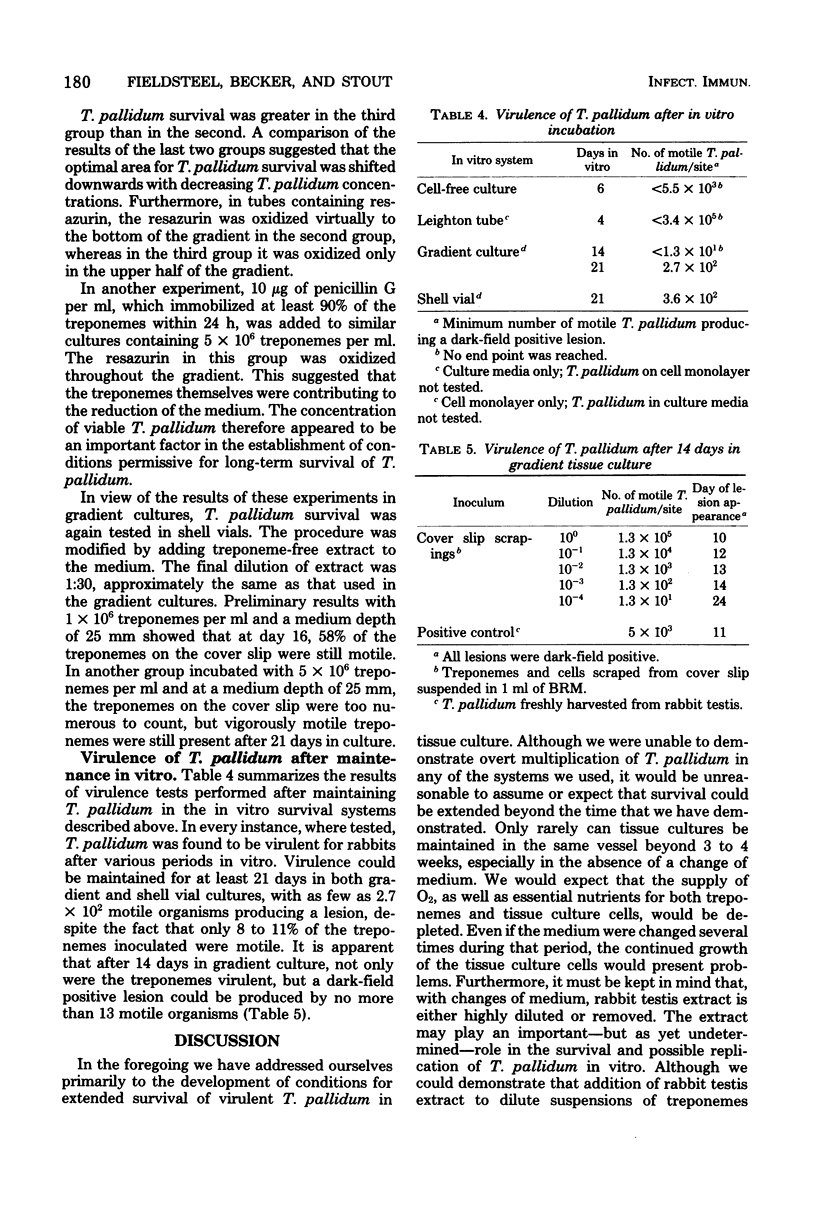
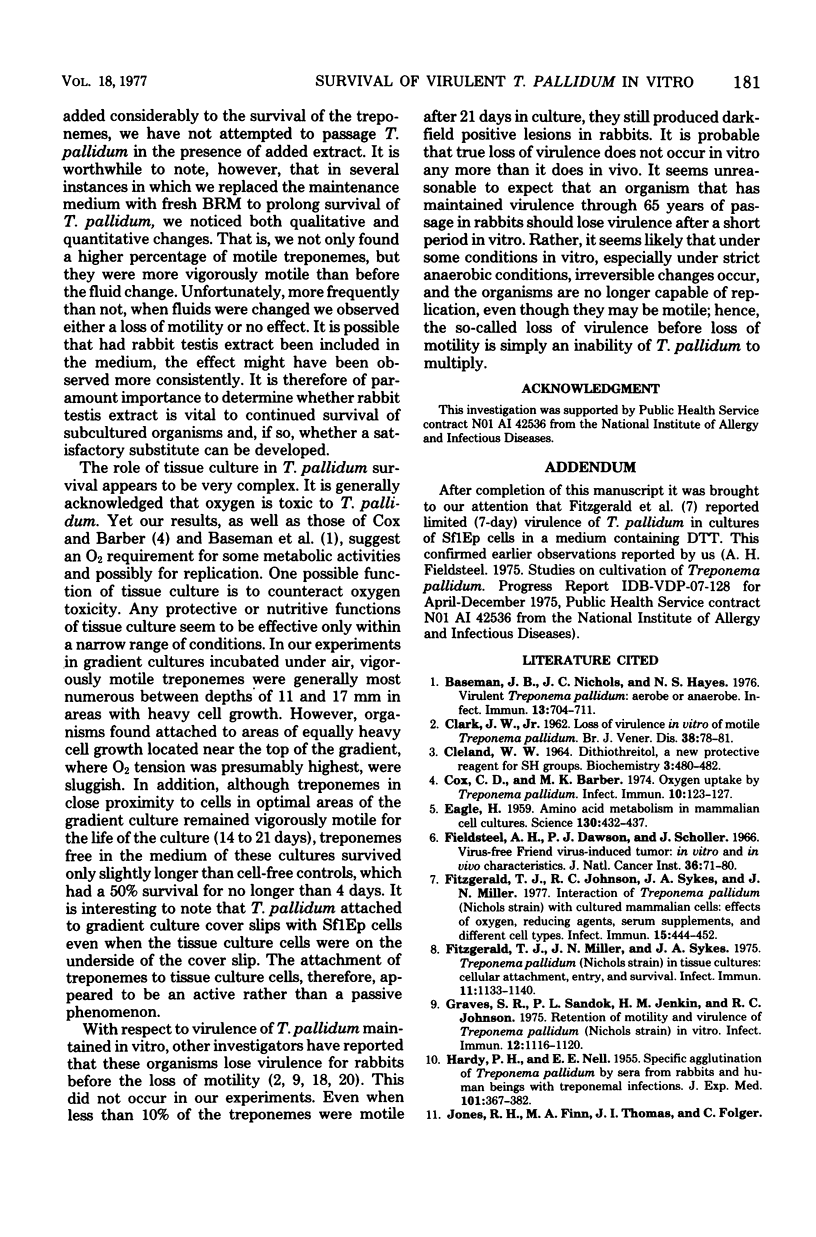
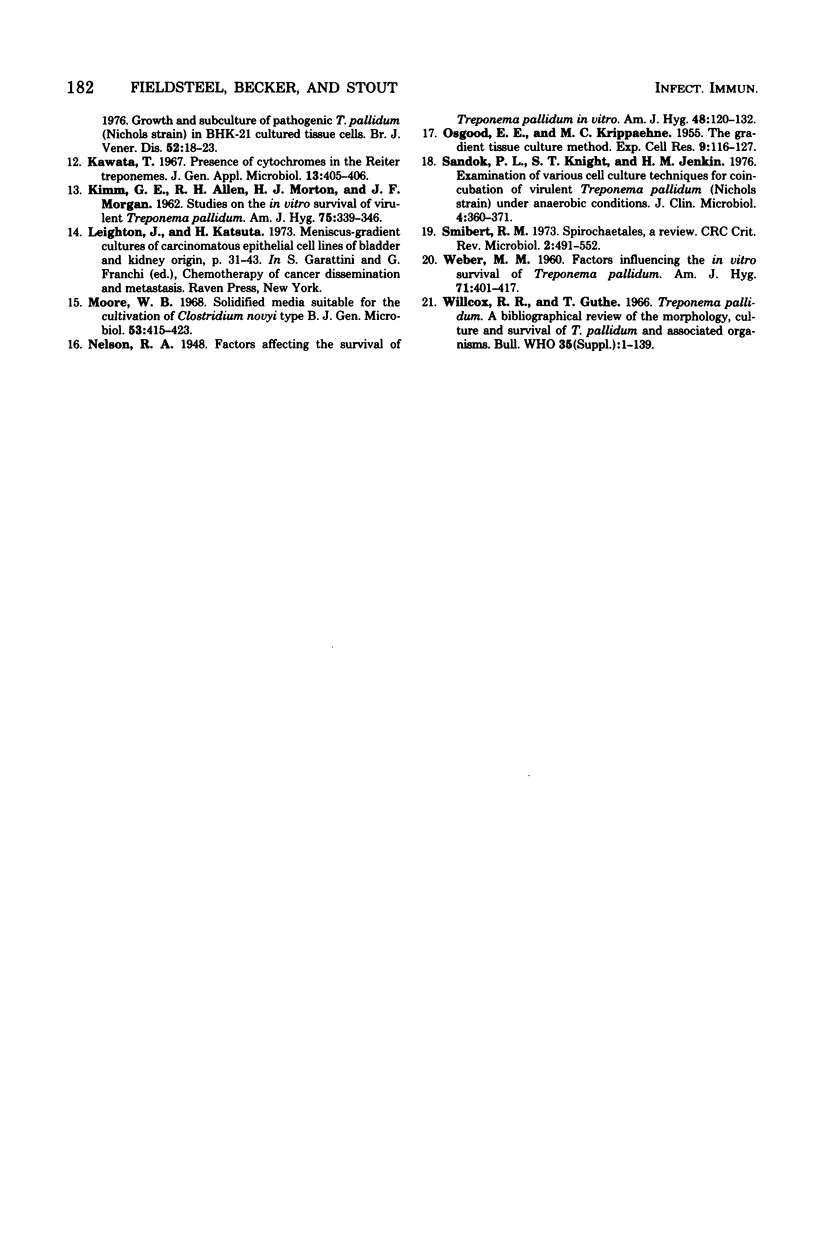
Selected References
These references are in PubMed. This may not be the complete list of references from this article.
- Baseman J. B., Nichols J. C., Hayes N. C. Virulent Treponema pallidum: aerobe or anaerobe. Infect Immun. 1976 Mar;13(3):704–711. doi: 10.1128/iai.13.3.704-711.1976. [DOI] [PMC free article] [PubMed] [Google Scholar]
- CLARK J. W., Jr Loss of virulence in vitro of motile Treponema pallidum. Br J Vener Dis. 1962 Jun;38:78–81. doi: 10.1136/sti.38.2.78. [DOI] [PMC free article] [PubMed] [Google Scholar]
- CLELAND W. W. DITHIOTHREITOL, A NEW PROTECTIVE REAGENT FOR SH GROUPS. Biochemistry. 1964 Apr;3:480–482. doi: 10.1021/bi00892a002. [DOI] [PubMed] [Google Scholar]
- Cox C. D., Barber M. K. Oxygen uptake by Treponema pallidum. Infect Immun. 1974 Jul;10(1):123–127. doi: 10.1128/iai.10.1.123-127.1974. [DOI] [PMC free article] [PubMed] [Google Scholar]
- EAGLE H. Amino acid metabolism in mammalian cell cultures. Science. 1959 Aug 21;130(3373):432–437. doi: 10.1126/science.130.3373.432. [DOI] [PubMed] [Google Scholar]
- Fieldsteel A. H., Dawson P. J., Scholler J. Virus-free Friend virus-induced tumor: in vitro and in vivo characteristics. J Natl Cancer Inst. 1966 Jan;36(1):71–80. [PubMed] [Google Scholar]
- Fitzgerald T. J., Johnson R. C., Sykes J. A., Miller J. N. Interaction of Treponema pallidum (Nichols strain) with cultured mammalian cells: effects of oxygen, reducing agents, serum supplements, and different cell types. Infect Immun. 1977 Feb;15(2):444–452. doi: 10.1128/iai.15.2.444-452.1977. [DOI] [PMC free article] [PubMed] [Google Scholar]
- Fitzgerald T. J., Miller J. N., Sykes J. A. Treponema pallidum (Nichols strain) in tissue cultures: cellular attachment, entry, and survival. Infect Immun. 1975 May;11(5):1133–1140. doi: 10.1128/iai.11.5.1133-1140.1975. [DOI] [PMC free article] [PubMed] [Google Scholar]
- Graves S. R., Sandok P. L., Jenkin H. M., Johnson R. C. Retention of motility and virulence of Treponema pallidum (Nichols strain) in vitro. Infect Immun. 1975 Nov;12(5):1116–1120. doi: 10.1128/iai.12.5.1116-1120.1975. [DOI] [PMC free article] [PubMed] [Google Scholar]
- HARDY P. H., Jr, NELL E. E. Specific agglutination of Treponema pallidum by sera from rabbits and human beings with treponemal infections. J Exp Med. 1955 Apr 1;101(4):367–382. doi: 10.1084/jem.101.4.367. [DOI] [PMC free article] [PubMed] [Google Scholar]
- KIMM G. E., ALLEN R. H., MORTON H. J., MORGAN J. F. Studies on the in vitro survival of virulent Treponema pallidum. I. Methodology and basal synthetic medium. Am J Hyg. 1962 May;75:339–346. doi: 10.1093/oxfordjournals.aje.a120255. [DOI] [PubMed] [Google Scholar]
- Moore W. B. Solidified media suitable for the cultivation of Clostridium novyi type B. J Gen Microbiol. 1968 Oct;53(3):415–423. doi: 10.1099/00221287-53-3-415. [DOI] [PubMed] [Google Scholar]
- OSGOOD E. E., KRIPPAEHNE M. L. The gradient tissue culture method. Exp Cell Res. 1955 Aug;9(1):116–127. doi: 10.1016/0014-4827(55)90165-8. [DOI] [PubMed] [Google Scholar]
- Sandok P. L., Knight S. T., Jenkin H. M. Examination of various cell culture techniques for co-incubation of virulent Treponema pallidum (Nichols I strain) under anaerobic conditions. J Clin Microbiol. 1976 Oct;4(4):360–371. doi: 10.1128/jcm.4.4.360-371.1976. [DOI] [PMC free article] [PubMed] [Google Scholar]
- WEBER M. M. Factors influencing the in vitro survival of Treponema pallidum. Am J Hyg. 1960 May;71:401–417. doi: 10.1093/oxfordjournals.aje.a120123. [DOI] [PubMed] [Google Scholar]
- Willcox R. R., Guthe T. Treponema pallidum. A bibliographical review of the morphology, culture and survival of T. pallidum and associated organisms. Bull World Health Organ. 1966;35:1–169. [PMC free article] [PubMed] [Google Scholar]


